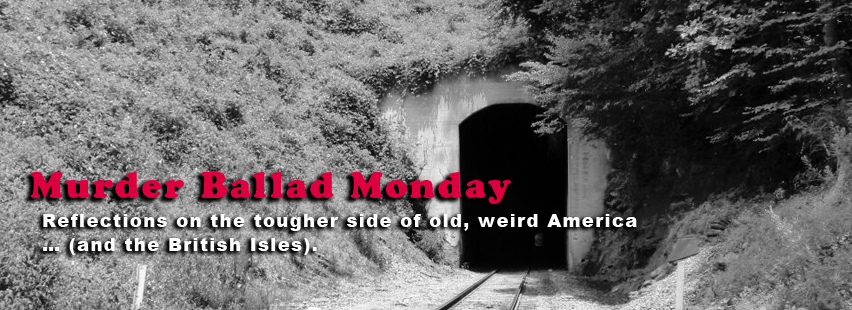“Morphine”
<<<Back to page 1
From there, the trail is sparse; but there is a bit more sign. George Gibson’s version is not easily available to post here, but can be found on his 2000 June Appal recording Last Possum Up The Tree. In the liner notes, Gibson wrote
“The only people I heard sing this song were James Slone and Mel Amburgey. James said he learned the song from Mel and his brother Shade. Mel and Shade were both balladeers and banjoists, as was James …
Gran Hudson said his father, Steve Hudson, sang this song. Gran said his father always sang “I took it in a hell of a way,” instead of “I took it in that morphine way,” so I sometimes sing it this way. Also, James would intone in a speaking voice “Ain’t that a scandal and a shame” after the line “And I didn’t have one penny to my name.” Banjo Bill Cornett from Hindman, Kentucky, sang a version of this song in which he used the line, “I didn’t have a brownie to my name.”
Many soldiers became addicted to morphine as a result of medication during the Civil War. For years thereafter it was a legal substance. I suspect this song originated, however, ca. 1900 when railroads were being built in the counties surrounding Knott.
Clifton Hicks also did a great service by uploading two versions of the song “Morphine” by traditional Knott County musician Banjo Bill Cornett, from a collection of home recordings Cornett made in February, 1958.
There’s not much more in easy reach on this one, and I’m not inclined to go digging in too many books because, as I said above, the history just isn’t what makes this hammer ring. However, even with these few pieces of evidence, I think we can make some reasonably educated guesses.
I suspect Gibson is correct that this is post-bellum 19th century music. There is some lyrical variation between the versions we still have, but not much. That suggests the latest possible time of origin for traditional American songs. As well, that’s the era when morphine addiction became an epidemic in America. Thus, it likely originated in or came to eastern Kentucky sometime around the turn of the century, as Gibson posits.
I say “came to” Knott County because it seems clear to me that this is African-American music. Maybe it came in with black railroad workers, or other migrant laborers out of the big river valleys. I doubt that it’s native to the white mountaineers. Perhaps it came from black folks that settled in eastern Kentucky – we can’t really know without more hard evidence. There is something to be researched there. As Clifton Hicks wrote me recently…
“African-Americans came into east Kentucky and Knott County with the very first English speaking settlers around the time of the Revolution. We know this because there is an historical account from 1781 of an enslaved African-American banjo player migrating into Kentucky with a group of white settlers. There has been a strong presence of black and mixed race families in eastern Kentucky ever since–and they contributed MUCH to the regions musical heritage.”
On an obvious level, “Morphine” is an early form of country blues. More deeply, one need only listen to the scratchy, wonderful tunes on Smithsonian-Folkways’ 1998 Black Banjo Songsters of North Carolina and Virginia to hear similar picking styles, tuning, and even quick bursts of nearly identical melody. Finally, at least one key lyric shows up in other African-American music that is better-documented in early commercial recordings.
Leadbelly sometimes sang, in “Goodnight Irene” – “I love Irene, God knows I do. I love her till the sea run dry. If Irene turns her back on me, I’m gonna take morphine and die.”
Skip James sang, in “Drunken Spree,” Love my darling, yes I do. Love her till the sea goes dry. And if I thought she didn’t love me, I’d take morphine and die.
A poster named Joseph Scott commented to the upload of Banjo Bill Cornett’s versions above with several other citations for that lyric in traditional black music from the turn of the century. Again, that alone is not definitive evidence. However, we’ve already seen several clear examples in this blog of African-American songs filtering in to white Appalachia, even in to modern country and bluegrass repertoires. It seems quite likely to me that’s the direction of transmission in this case.
Coda “It was only a joke…”
Well, there you go. That’s as good a history as I can muster for the moment. I enjoy the hunt, and I’m satisfied for now. As I said above, though, it’s not what drew me in to this song. The narrator of “Morphine,” whether evoked by a talented post-modern teenager or an old-time blues banjo songster, has something for any of us with a broken heart and ears to hear. All sorts of folks after the Civil War knew too well the pain and cost of what we now call opioid addiction. God help us, it’s ours to suffer through again.
Maybe God does help us, even in our deepest time of loss – with music.
Thanks for reading and listening this week folks!


